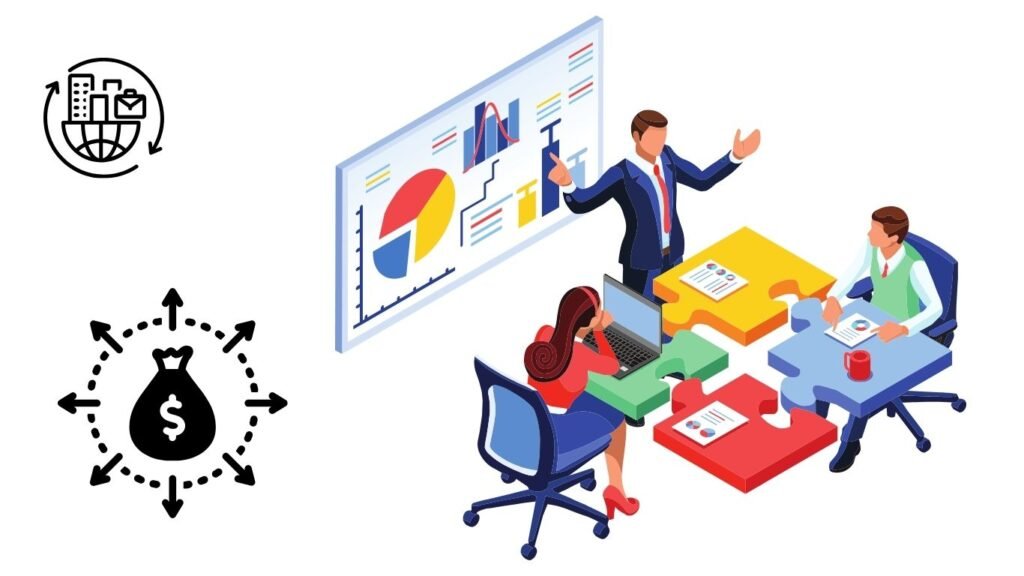Introduction: What Is a Personal Financial Advisor?
A personal financial advisor is someone who helps individuals manage their money wisely. This includes advice on budgeting, saving, investing, retirement planning, and more. As people become more concerned about their financial future, the demand for trusted advisors continues to grow.
If you’re good with numbers, enjoy helping others, and want a career with strong earning potential, becoming a personal financial advisor could be the right path for you. Let’s walk through the entire journey—from education to career success—in a simple, easy-to-follow way.
Step 1: Understand What Financial Advisors Do
Before jumping in, it’s important to know what this career involves. Here’s what financial advisors typically do:
- Help clients understand their current financial situation
- Set long-term financial goals
- Create a plan to meet those goals
- Recommend investments and savings strategies
- Provide guidance on taxes, insurance, and estate planning
- Monitor progress and update plans as life changes
Advisors also spend time building trust with clients, reviewing documents, using financial software, and keeping up with financial laws and market changes.
Step 2: Get the Right Education
To get started, you need a strong educational background. A bachelor’s degree is usually the minimum requirement.
Best Majors for Financial Advisors:
- Finance
- Economics
- Accounting
- Business Administration
- Mathematics or Statistics
These degrees teach the core skills you’ll use every day—like analyzing financial data, understanding markets, and developing financial plans.
If you’ve already completed a degree in another field, don’t worry. You can still become a financial advisor by gaining experience and certifications.
Step 3: Develop Key Skills
A good education is important, but personal skills matter just as much in this career.
Here are essential skills every financial advisor should have:
Listening Skills: Clients will share their dreams and worries with you. Listening helps you understand and guide them better.
Clear Communication: Explaining financial concepts in simple terms is a must.
Critical Thinking: You’ll need to analyze different financial options and choose the best one for your client.
Attention to Detail: Mistakes in planning or numbers can be costly.
Ethical Standards: Clients trust you with their future. Honesty and integrity are key.
Practice these skills in school, internships, or even part-time jobs in customer service or finance.
Step 4: Get Experience in Finance
Before becoming a certified or licensed financial advisor, it helps to get experience in a financial role. Many people start with jobs like:
- Bank teller or financial services rep
- Insurance agent
- Paraplanner (assistant to a financial advisor)
- Investment or research analyst
These roles teach you how to work with clients, use financial tools, and understand real-life money problems. Employers often prefer candidates who have some experience in the industry.

Get Experience in Finance
Step 5: Get Certified
Although not legally required, certifications make you more credible and open the door to more job opportunities.
The most popular certification: Certified Financial Planner (CFP®)
To earn the CFP® designation, you’ll need:
- A bachelor’s degree (in any field)
- Courses in financial planning (offered by approved programs)
- At least 3 years of work experience in finance
- Passing the CFP® exam
Other Certifications You Can Consider:
- Chartered Financial Consultant (ChFC)
- Certified Investment Management Analyst (CIMA)
- Personal Financial Specialist (PFS) – for CPAs
- Chartered Financial Analyst (CFA) – for investment-focused careers
These designations show clients and employers that you’re serious about the profession.
Step 6: Get Licensed (If Needed)
Depending on your services, you may need to be licensed. If you want to sell stocks, bonds, mutual funds, or insurance, you must pass exams from regulatory agencies like FINRA and NASAA.
Common licenses include:
- Series 7: Allows you to sell most types of securities.
- Series 65: Required to give investment advice and charge fees.
- Series 66: Combines Series 63 and 65 for investment advisors.
- State Insurance License: Needed if you plan to sell life, health, or other insurance products.
Your employer may sponsor you for these exams, and study materials are available online or in prep courses.
Step 7: Decide Where You Want to Work
There are different paths a financial advisor can take, depending on their goals and lifestyle.
1. Work at a Large Firm
You can work for banks, investment firms, or insurance companies. These companies offer training, clients, and a steady paycheck.
2. Join a Smaller Independent Firm
Smaller firms often have a more personal feel. You may work with high-net-worth individuals or specialize in specific areas like retirement or tax planning.
3. Start Your Own Practice
Some advisors choose to work for themselves. This gives you full control over your schedule and client list. However, it also means you must do your own marketing, compliance, and business operations.
Step 8: Keep Learning and Stay Certified
Once you become a financial advisor, your learning doesn’t stop. You must stay up to date on new laws, tax codes, and financial strategies.
Most certifications, like the CFP®, require continuing education to keep your credentials active.
Stay sharp by:
- Attending workshops and conferences
- Reading financial news and books
- Taking online courses or webinars
- Networking with other financial professionals
How Long Does It Take?
Here’s a basic timeline:
| Step | Time Needed |
|---|---|
| Bachelor’s Degree | 4 years |
| Entry-level Experience | 1–3 years |
| Certification (e.g., CFP®) | 6–12 months |
| Licensing Exams | 1–3 months |
So, in total, you can become a licensed and certified financial advisor in about 5 to 7 years. You can start sooner if you already have a degree or experience.
Salary and Career Outlook
How much can you earn?
- Entry-level: $40,000–$60,000
- Mid-career: $70,000–$120,000
- Experienced advisors: $150,000+
- Top earners: Over $200,000/year
According to the U.S. Bureau of Labor Statistics, employment for personal financial advisors is expected to grow 13% from 2022 to 2032, much faster than the average for all occupations.
This means strong job security and a growing demand for skilled professionals.

Common Myths About Becoming a Financial Advisor
Let’s clear up a few myths:
Myth #1: You need to be a math genius.
Truth: Basic math and financial understanding are important, but you don’t need to be an expert in calculus or complex math.
Myth #2: You have to be rich to become a financial advisor.
Truth: Many successful advisors started with very little. Your knowledge and service, not your personal wealth, are what matter.
Myth #3: It’s all about selling products.
Truth: While some roles involve selling, many advisors work on a fee-only basis, offering advice without commissions.
Tips for Aspiring Financial Advisors
Here are some quick tips to help you succeed on your path:
- Take finance courses early if you’re in school.
- Find a mentor who’s already in the field.
- Join finance clubs or online communities.
- Practice your soft skills, especially listening and public speaking.
- Start saving money for licensing exams and certifications.
- Create a LinkedIn profile to connect with other professionals.
Final Thoughts
Becoming a personal financial advisor is a journey that takes time, effort, and passion. You’ll need the right education, certifications, and mindset to succeed. But if you stick with it, the rewards are worth it—both financially and personally.
You’ll help people save for their dreams, reduce financial stress, and build secure futures. Few careers offer such a positive impact.
So if you’re wondering how to become a personal financial advisor—now you know! Take it one step at a time, and soon you’ll be guiding others toward financial success.
